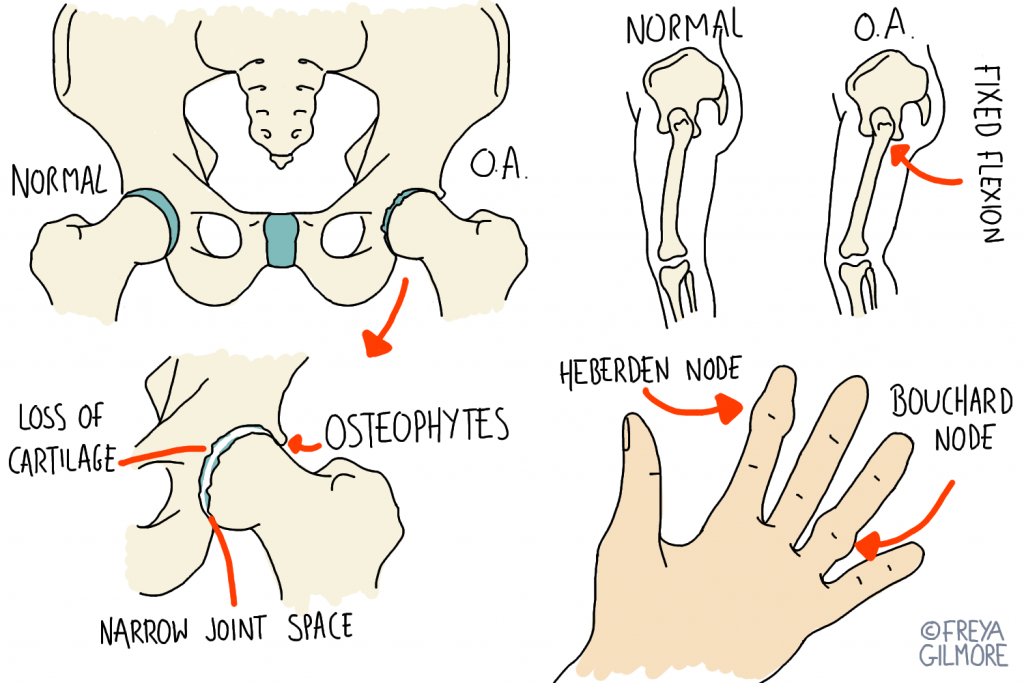The IT band is a band of tissue that runs down the side of the…

Joint Replacement Surgery and Osteopathy
Osteopathy can help with arthritis to a degree, with the best results in the earlier stages. However, with more advanced cases, we recognise that there is little we can do for the joint itself. While we may still be able to provide some relief by improving the local musculature and areas of compensation, sometimes the joint just needs surgery.
Osteoarthritis Overview
Osteoarthritis (OA) is a condition of cartilage. Due to injury, general poor joint health, or wear and tear, the cartilage degrades. It becomes less smooth, making movements more stiff and painful. The brain likes to avoid pain, so movements adapt to bypass painful movements. Unfortunately, thorough movement is exactly what cartilage needs for optimal health. Muscles tighten in an effort to protect the joint, further limiting necessary movement.
In the later stages, cartilage may flake off into the joint space. This can cause clicking and locking as well as more pain. Over time, cysts can form between the cartilage and bone, and bone may overgrow the edge of the joint. An X-ray will show a reduced joint space on top of these changes.
Osteopathy Before Surgery
In the early stages of arthritis, we can work to keep the joint moving as well as possible. We look at the body as a whole, so we can see if anywhere is compensating for the affected joint. By keeping the rest of the body moving well, we can work to prevent any other areas becoming overloaded. Good movement in the other joints helps reduce the chances of developing OA here too.
Some patients like regular osteopathy appointments to keep their arthritis under control. We can work with you to keep you moving well through treatment and exercises. The better your body responds to these, the less frequently we will need to see you in clinic. It’s never too early to start a treatment plan for your arthritis.
More advanced OA reaches a point where the cartilage is too damaged to heal to a significant degree. At this point, you should consider your options with your GP. The next steps can take a long time to reach, so we can continue to support you in the interim. Your muscles may be more protective and tight than before, and your movements more limited. Although there is little we can do for the joint surface, we can continue to work with other local tissues.
Rehabilitation After Surgery
After your joint replacement, you should be offered rehabilitation through the hospital. This is usually delivered by a physiotherapist within the NHS. Some private health insurers are happy for you to find a registered manual therapist who can help. Your new joint will take some getting used to, so a combination of hands on therapy and exercises are usually the best approach. Your osteopath can help provide you with these exercises, and adapt them as you heal.
If your arthritis caused changes to your gait, it may take some time to get used to walking normally again. This applies to the affected joint and the rest of the body. It may be appropriate to employ strengthening exercises as well as mobility exercises. Your osteopath will look at you as an individual, and devise a plan especially tailored for you.
Book an appointment to manage your arthritis in Farnborough here.





